| FAQ |
| Members List |
| Social Groups |
| Calendar |
| Search |
| Today's Posts |
|
#121
|
||||
|
||||
|
With the deeper pan and massive filter canister, how much oil does this thing take?
|
|
#122
|
||||
|
||||
|
Right around 7 quarts.
__________________
1964 Tempest Coupe LS3/4L70E/3.42 1964 Le Mans Convertible 421 HO/TH350/2.56 2002 WS6 Convertible LS1/4L60E/3.23 |
|
#123
|
||||
|
||||
|
Thanks. Will try to put it in and fire it up today.
|
|
#124
|
||||
|
||||
|
Looks great all painted up, wish mine was that far along.
Let us know how it goes and if you don't mind tell us what all you've done to it, what parts you've replaced and what machine work has been done on it.
__________________
1964 Tempest Coupe LS3/4L70E/3.42 1964 Le Mans Convertible 421 HO/TH350/2.56 2002 WS6 Convertible LS1/4L60E/3.23 |
|
#125
|
||||
|
||||
|
Today I wanted to try to get some compression numbers, just to get an idea on the general health of the engine before I tear it down any further.
I put the auto trans bell and flexplate back on it along with the starter motor so I could run the compression test. 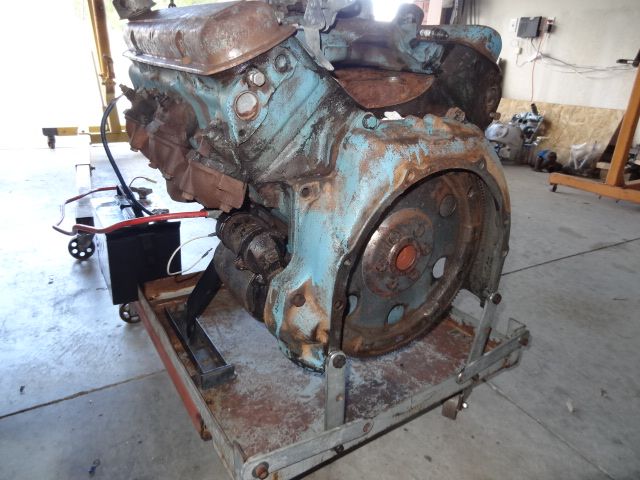 I also installed a nice tight lightly used double-roller timing set. This way the valve action wouldn't be retarded because of a loose chain, perhaps giving me a better chance of getting some decent compression readings.  I pirated a couple of good used battery cables from my stash and hooked up the battery. I also put the 2-barrel carb back on and blocked the choke plate and throttle linkage wide-open, to better simulate a test you'd do on a complete engine. 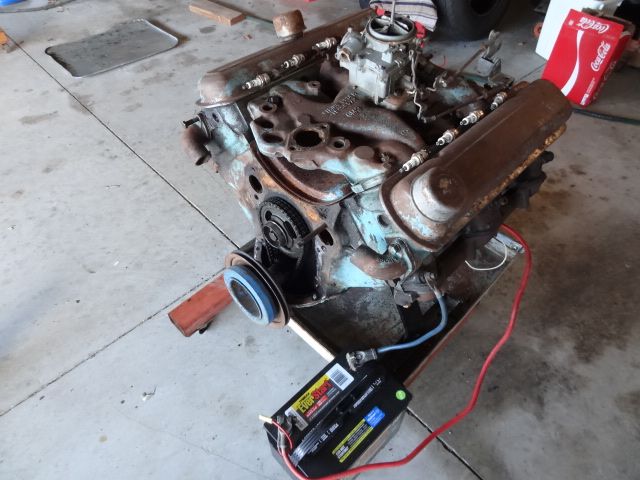 Now I'm ready to do some testing. 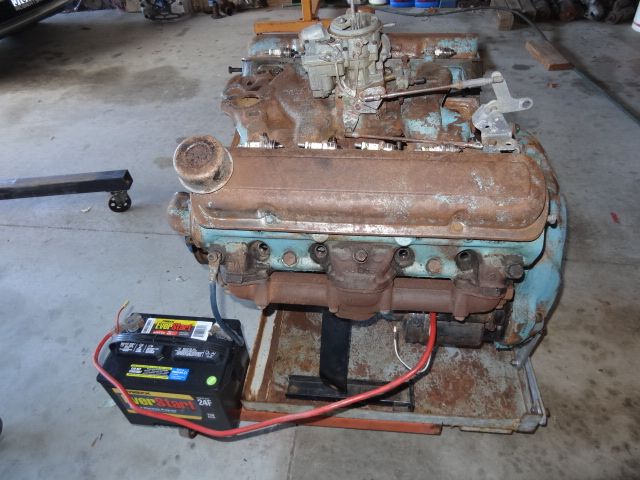 Since the engine is obviously cold and the lifters aren't pumped up the readings won't tell the whole story, but here they are: 1 - 110 3 - 80 5 - 65 7 - 105 2 - 95 4 - 70 6 - 65 8 - 110 Tested again after adding a squirt of Marvel Mystery Oil to each cylinder: 1 - 120 3 - 100 5 - 100 7 - 115 2 - 80 4 - 80 6 - 70 8 - 130 So at this point I'll let it sit for a week to give the MMO a chance to soak into the rings a bit more to perhaps free them some and test again, then I'll pull the heads.
__________________
1964 Tempest Coupe LS3/4L70E/3.42 1964 Le Mans Convertible 421 HO/TH350/2.56 2002 WS6 Convertible LS1/4L60E/3.23 |
|
#126
|
||||
|
||||
|
I haven't had much time lately to mess with the 389, but I did pick up an interesting piece of the puzzle today.
A 1959 Tri-Power cast iron thermostat housing was generously donated to the project by PY member 56 Batwing. Thanks again Jack.  What makes this part unusual is the engine lifting loop built into it. On the '59 2 barrel and 4-barrel intakes the loop is integrated into the intake manifold casting, but for the Tri-Power they were only able to find room for the loop on the thermostat housing. 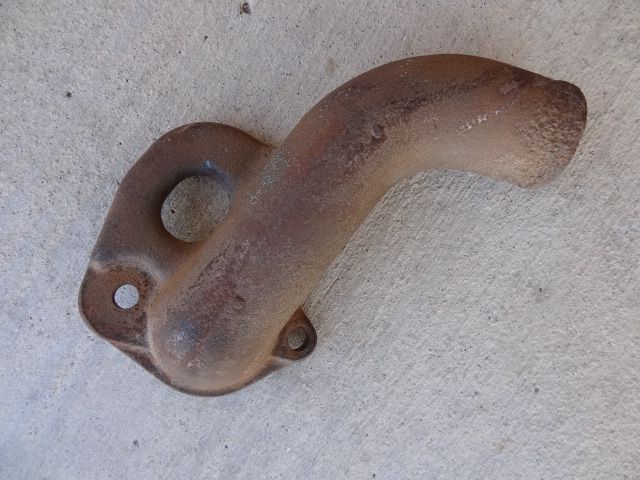 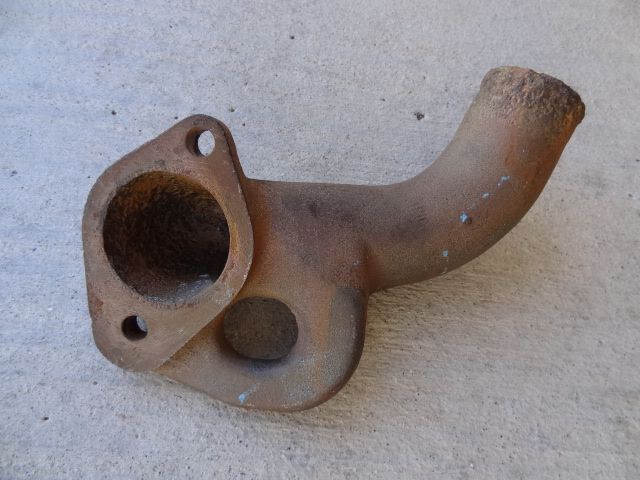 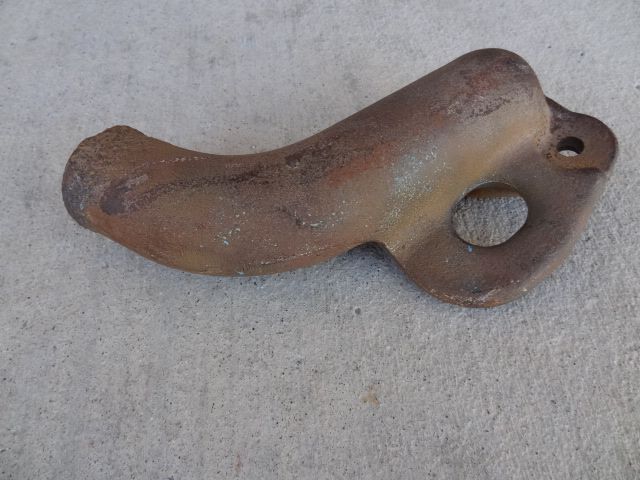 Here it is shown next to an aluminum repro of a '65 Tri-Power housing for comparison. The '59 unit is pretty big and heavy, I put it on a shipping scale and it weighs 2.85 pounds compared to the '65 aluminum repro at a scant .55 pounds. 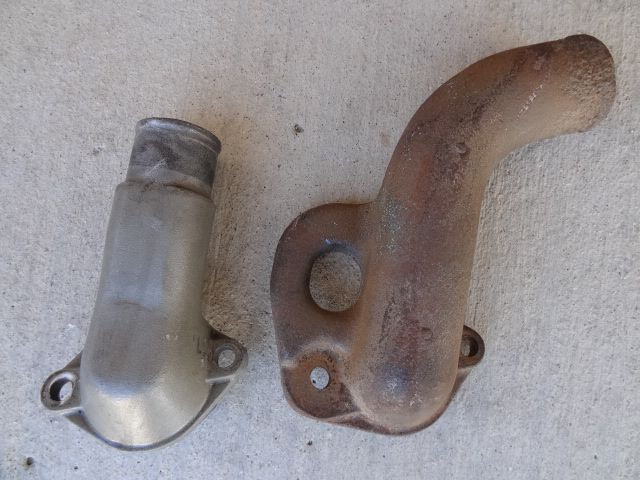 Here you can see how the lifting loop configuration of the thermostat housing was copied in .150" to .175" thick stamped steel for later engines, attaching to one of the studs that mount the timing cover. 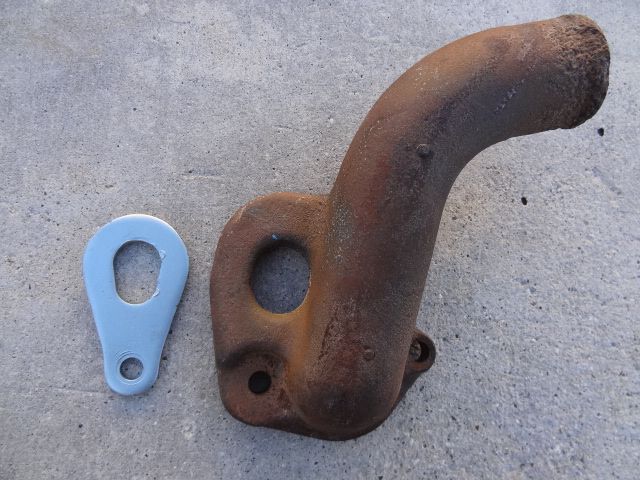
__________________
1964 Tempest Coupe LS3/4L70E/3.42 1964 Le Mans Convertible 421 HO/TH350/2.56 2002 WS6 Convertible LS1/4L60E/3.23 |
|
#127
|
||||
|
||||
|
.....along with the correct linkage and fuel lines, sitting on the builder's workbench ready for shipment. The carbs, linkage and fuel lines are shown here mocked up on a 1960 intake.
Pretty unusual fuel line routing compared to what I'm used to seeing on the more common '64 -'66 setups. New toys.   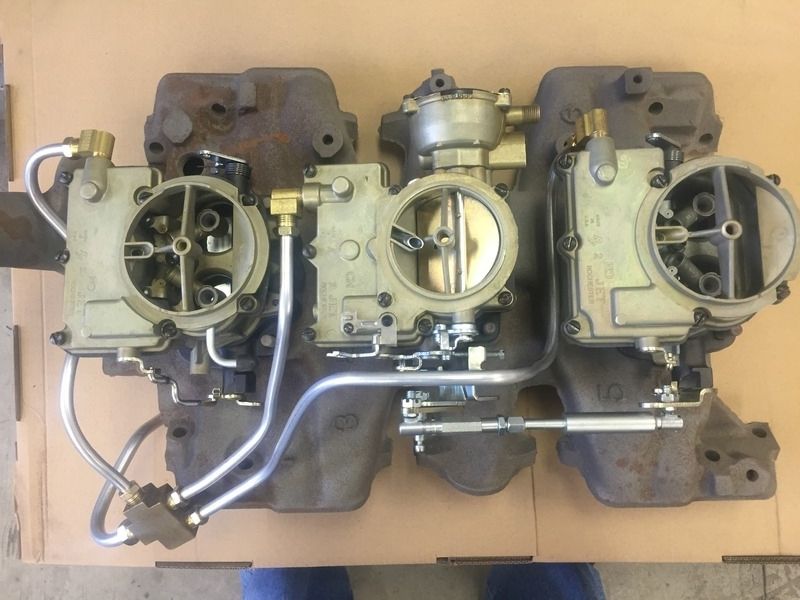
__________________
1964 Tempest Coupe LS3/4L70E/3.42 1964 Le Mans Convertible 421 HO/TH350/2.56 2002 WS6 Convertible LS1/4L60E/3.23 |
|
#128
|
||||
|
||||
|
Great. Love seeing this old stuff.
Concerning that looped thermostat housing ... interesting to note the '60 version being for a non-reverse flow engine, has an extra hole to accommodate the small over flow tube. |
|
#129
|
|||
|
|||
|
Quote:
|
|
#130
|
|||
|
|||
|
Hay B-Man,
Hope you are well, better than me anyway, as have not had much energy. Have no contact info or address for you and need. Have to get AAA to tell me how to get there. Why you ask? I screwed up, Truthfully. It is all on my main, desktop computer. Forgot it is on automatic update, and tried to download the latest update from Microsoft. No idea what went wrong, but it is now worse than my first 4 mz PC. Please, The Yahoo account. Thanks Dan
__________________
1955 Star Chief 4 dr w ex w/c lift 1964 Comet 4 dr 1989 Cherokee 4 dr 2000 Dodge Grand Caravan w w/c lift 2000 Kia Sportage 4 dr |
|
#131
|
|||
|
|||
|
Great, thanks for all the information, I appreciate it.
Quote:
|
| Reply |
|
|